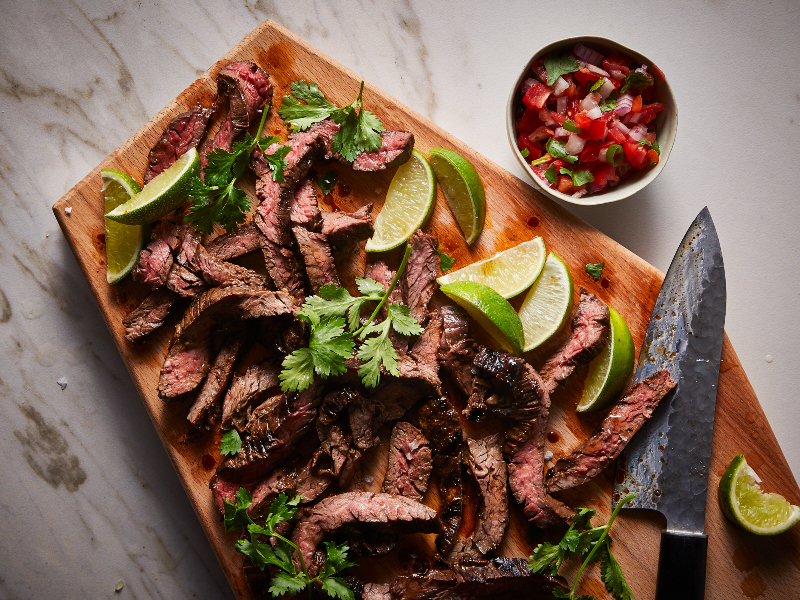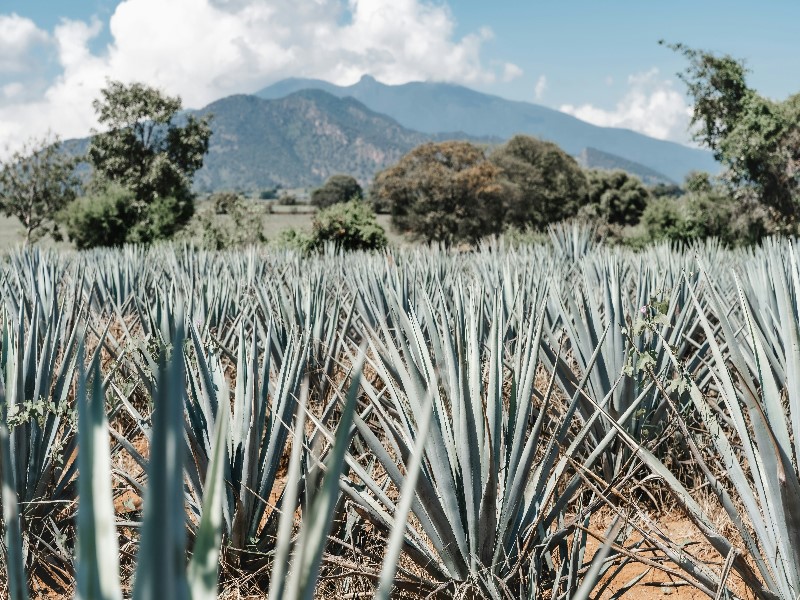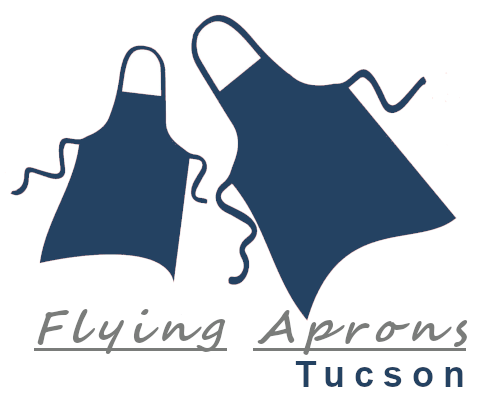
Have a Carne Asada
You’re probably familiar with carne asada, meaning “grilled meat” in Spanish.
I was thrilled when J. Felipe Garcia, Visit Tucson’s president/CEO and an accomplished cook and blogger of his world travels and food encounters, agreed to teach a class on October 11. The conversation was something like this – he says we’re going to cook and eat carne asada and have a carne asada.
My response was something like this – huh, what?
You see, I didn’t know you can have a carne asada while eating carne asada. Think of having a carne asada akin to having a barbecue. Now you get it, right?
It’s the whole experience of bringing people together, storytelling, cooking, the sights and smells of meat grilling, chiles and tomatoes charring for salsa and tortillas warming.
For centuries, cattle have been raised in Mexico, Central America and South America since Spanish colonists arrived in North America. All kinds of carne asada versions exist.
Mexico’s carne asada is said to have originated in Northern Mexico, where cattle ranching forms a great part of the local economy. The state of Nuevo Leon where the city of Monterrey, Felipe’s hometown, is the capital, is said to be the epicenter of carne asada. It’s believed each person in that part of the country eats more than 80 pounds of beef a year.
Skirt steak is a favorite cut throughout Latin America for a variety of types of carne asada, from the simple Argentine style to the citrusy Nicaraguan style and everything in between.
In Argentina, it’s typically accompanied by chimichurri, the herbs, garlic, oil and vinegar dressing, and often served with salads, including Russian-style potato salad. In Nicaragua, chimichurri is also a popular condiment, and the dish is usually served with red beans and rice called gallo pinto, sweet plantains and cabbage salad. In Paraguay, it often comes with fried yucca or a rich type of cornbread called sopa paraguaya.
On Felipe’s menu are three different dishes with three unique salsas: Taco: Warm corn tortillas, carne asada, avocado, lime juice, sea salt and salsa; Lorenza: Corn tortillas grilled crispy like a tostada, cheese, carne asada, lime, avocado and salsa; Caramelo: Flour tortillas and cheese (think quesadilla), carne asada, lime, avocado and salsa.
Classes
The Wildcats notched a great win over Colorado on Saturday. On October 20, have fun cooking and talking football with Coach Ricky and LaMonte Hunley in their Cooking with the Wildcats class. We know what they did on the football field, but can they cook? You bet! On the menu: Lemon and Wine Marinated Baked Salmon; Bok Choy Salad with Strawberry, Pear, Apple, Jalapeño and Sesame Seeds; Sautéed Spinach; and Key Lime Pie.
Get a jump on your holiday baking on October 22 making biscotti, the Italian staple for generations. Certified Executive Chef and Slow Food Southern Arizona President Barry Infuso will lead you making ready-to-bake dough for this twice-baked treat that’ll make about 10 dozen cookies. It’s a good thing they keep, but they’re so delicious they’ll get gobbled up by family and friends.
News & Notes
Congratulations to Mountain Oyster Club Executive Chef Obie Hindman on becoming a Tucson City of Gastronomy Chef Ambassador.
Chef Miguel Heredia is back as executive chef at Lodge on the Desert.
Tucson Meet Yourself takes place 11 a.m. – 10 p.m. Friday and Saturday, October 7 and 8, and from 11 a.m. – 6 p.m. on Sunday, October 9, at the Joel D. Valdez Main Library, 101 N. Stone Ave.
Oracle’s Life Under the Oaks Lavender Farm is bringing the farm to Tucson and opening The Lavender Manor, 347 E. 4th St., later this month. Stay tuned for details on a popup tea we’ll have there.
They’ll feature natural, small batch, handcrafted lavender farm products, dried lavender bundles, wreaths, sachets, special curated plates, mugs and jewelry, all from local artists; artwork and art cards created by founder/owner Carolyn Blair. They’ll also sell teas, culinary lavender, homemade lavender fruit jams and other confections.
Wishing you joy in the kitchen,
Michele

Sopa Paraguaya
3 large onions, chopped
½ cup unsalted butter melted and cooled + more for buttering baking dish
500 grams Queso Panela or Queso de Freir, crumbled
2 cups whole milk, room temperature, divided
5 large eggs, room temperature
1 teaspoon kosher salt
1 tablespoon baking powder
400 grams Quaker yellow cornmeal
1 tablespoon anise seeds, optional
1. Heat oven to 350°F. Butter a 9-inch-by-13-inch baking dish and dust with cornmeal; set aside.
2. In a large skillet over medium-high heat, melt butter. Add onions and salt, and cook until soft and transparent, about 5-10 minutes. Remove skillet from heat, add half the milk; set aside to cool.
3. In a large bowl, beat eggs until frothy. Add onion mixture, cornmeal, anise seeds if using and remaining milk, whisking until well combined. Stir in the cheese. The mixture will look runny – don’t add more cornmeal.
4. Pour into baking dish and bake until golden brown, about 50-60 minutes, or a cake tester comes out clean. Cool in pan 10-15 minutes, then cut into squares. Serve warm with carne asada, chili, beef stew, hearty soups or barbecue. Refrigerate in an airtight container or sealable bag up to 5 days.
Note: Paraguayan cheese can be difficult to find in the U.S. Other cheeses to use: Queso de Freir, Queso Blanco, Queso Panela, Mexican Blend, Monterey Jack, Colby Jack, and cheddar.





